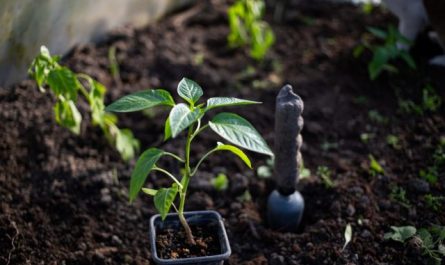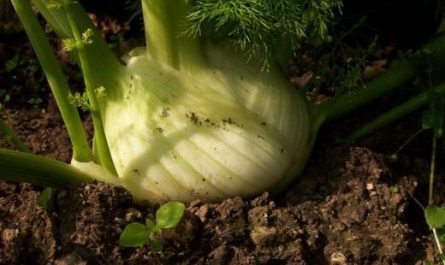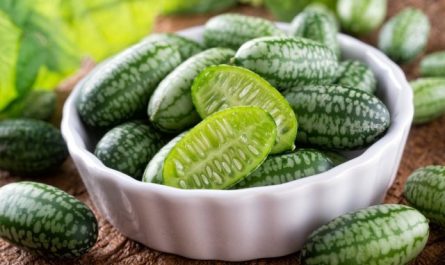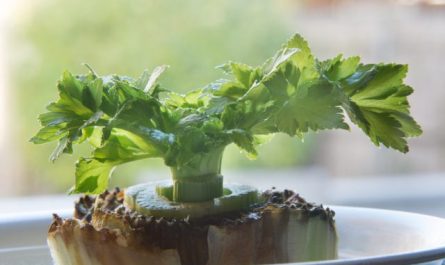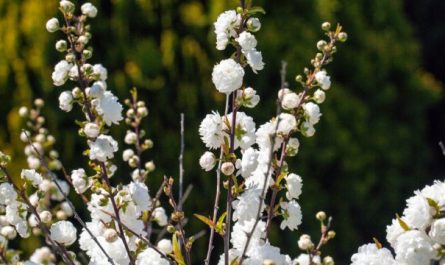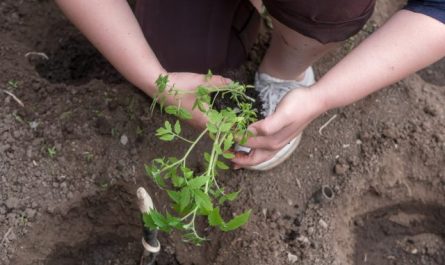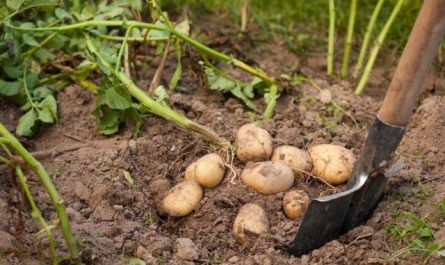In the animal world, a certain niche is occupied by the order of rodents. In the process of evolution, they have mastered almost all corners of the planet where they can find food and shelter. Particularly annoying and causing great trouble to humans are the relatively small species of animals of this order – mice, and where pets are raised on the farm, then rats. Not all rodents living in the same territory with humans are pests and are subject to destruction. Some live their entire lives in the natural environment and are not interested in the contents of human bins, but some species are constant companions of humans, although they live freely in natural environmental conditions. Such species of animals are called synanthropic. These include the house mouse. The house mouse is omnivorous and easily gets used to any place where there is food, but still prefers “comfortable” conditions of coexistence with people in their homes.

Small, 6 to 9 cm long, with soft gray fur and black beads of large eyes, so harmless in appearance, the house mouse is a formidable pest. It not only spoils food and things in the house, but is also a carrier of all sorts of diseases, including plague, typhoid fever, tularemia, hemorrhagic fever, yersiniosis or pseudo-tuberculosis, leptospirosis and others.
Mice can infect food, linen, clothing and transmit helminth eggs to humans, including tapeworms, E. coli, fleas, and ticks. They are not only a direct but also an indirect source of human infection through dogs, cats, and other animals. People can re-infect each other through parasite bites. Therefore, the fight against domestic rodents is a necessary measure of protection against pests that are a source of infection for humans and animals. A one-time spread of poisons or folk remedies will not help get rid of house mice. A system of measures to protect against pests is needed. To remove rodents from the house and limit their number in the local area, complex measures are needed, including:
- preventive,
- chemical,
- physical,
- use of repellents,
- use of folk remedies.
Preventive measures against mice
When constructing summer cottages, as building materials, especially in-wall insulation, it is necessary to use those that are not suitable for domestic rodents to live in (mineral and basalt wool, glass wool, etc.). All voids are sealed from mice with cement with broken glass.
The outside of a residential building must be protected from mice entering the interior. Install small metal grates or other devices on ventilation pipes and windows to prevent mice from entering the house.
Keep all outbuildings clean and systematically carry out deratization of the outbuildings.
Cleaning of the house and utility rooms must always be done with a wet method, using disinfectants.
Keep food and its supplies in sealed containers that are inaccessible to rodents.
Maintain constant control over the sanitary condition of the yard (clean up trash cans, garbage pits), control basements, cellars, vegetable pits and other utility and yard premises.

How to protect your house from mice?
Chemicals for rats and mice
Chemical preparations are divided into urgent and prolonged-action pesticides. Urgent-action pesticides cause the death of the pest several hours after the bait is eaten. Prolonged-action pesticides gradually accumulate in the pest’s body and cause death after a certain time.
The chemical industry supplies the markets with a huge amount of pesticides in the form of powders, gels, pastes, glues, and liquid solutions. When using chemical poisons, you must be extremely careful, as they not only kill mice, but are also deadly for pets and affect the health of home owners and children. Currently, the most common preparations are Cyclone, Storm, and Rat Death. They cause the pest to suffocate, and it leaves its home for an open space to breathe, where it dies.
The pest’s exit to the open space makes it easier to remove it from the living space. The preparations “Nutcracker”, “Antigryzun”, “Zookumarin”, “Hunter” have similar properties. Chemical preparations differ in additives that attract pests. These preparations are used only in closed spaces. Before use, it is necessary to carefully read the recommendations and strictly follow them.
To ensure that pest control is more widespread, the biological product “Baktorodencid” is used, which causes infection of the entire population with mouse typhus through the bait eaten (processed grain, cereals, etc.). The product is based on microorganisms that are not dangerous to humans and animals.
Physical destruction of pests
Cats live in every rural house. There is a breed of rat-catching cats. Rural residents take their kittens in an instant. A very good “device” for catching mice. But in this case, poisonous baits should be placed in places inaccessible to animals and preparations should be used that do not affect their health. It is more expedient to use pesticides in the fall, when the animals are taken to their winter quarters.
Methods of physical destruction of mice and other domestic rodent pests include various types and kinds of traps.
Mousetraps
When the mouse removes the bait from the hook, it releases the spring and dies from the impact.
Mouse baits in plastic bottles
You can make several types of mouse traps yourself. The simplest is to cut off the top along the shoulders of the bottle. Grease the inner surface with any liquid oil or strips of mouse glue and put bait on the bottom. Put the cut off top of the bottle as a lid in a vase and seal it with tape. Secure the bottle on the table and turn it on its side. The mouse will get into the bottle for the bait, but will not be able to get out. Several mice will get into the bottle.
You can attach the bottle to a string or fishing line by the neck without cutting off the top and place it on the edge of the table. Put a piece of lard greased with unrefined sunflower oil or a piece of sausage inside. The mouse will climb inside and under its weight the bottle will hang in the air on a string. There are many varieties of traps made from plastic bottles. You just need to use your imagination.
Catching a mouse in a metal bucket
A tall metal bucket is filled halfway with water and covered with a newspaper with an X-shaped cut in the center. Light bait is placed on it and a ruler is placed against the bucket. The mouse climbs up the ruler by the smell and tries to reach the bait. It falls into the bucket of water at the X-shaped cut and drowns. You don’t have to pour water, you can just take the mouse that fell into the bucket away and throw it away. The bucket is made of metal and greased with oil inside so that the mouse doesn’t escape. They can even jump out of a low bucket.

Glue trap for mice
For people with strong nerves, you can use a “glue trap”. Special glue for mice “Kotofey”, “Chisty Dom”, ‘Alt’, ‘Euroguard’ is applied to any hard surface (cardboard, board) in a layer of at least 1 cm, and a fragrant bait is placed in the middle. Several mice can stick to the adhesive surface, but not everyone can stand their squeak. Sticking to the bait, the mice cannot hide. They can be destroyed outside the home.
Electric traps
The electronic trap is equipped with a sensor and as soon as the mouse gets inside the trap for the bait, the sensor is triggered and an electric discharge is activated, which is fatal for the animal. The electric trap is good because it is safe to use and does not harm the health of the owners and pets.
All types of traps have one drawback. They require recharging after a single action.
Plants that repel mice
Wild herbaceous and shrubby plants grow in natural conditions and are used to control indoor rodents. These include repellent plants that have a specific smell that rodents cannot stand.
- elderberry black, red, herbaceous,
- common wormwood, bitter wormwood,
- marsh wild rosemary,
- black root or rat-killer,
- peppermint,
- chamomile,
- feverfew,
- common tansy,
- lavender,
- chrysanthemums.
Repellent plants are poisonous to rodents. Mice cannot stand the smell of these plants and leave such places for a long period, and sometimes forever. In summer, fresh shoots and inflorescences (chamomile, pyrethrum) are used, scattering them on the floor, hanging them in bunches in outbuildings throughout the room. In winter, they are finely chopped, placed in small bags made of natural fabric and laid out in places where rodents most often appear.
If the owners do not want to bother with herbs, you can buy aromatic oils at a pharmacy or specialized stores. Soak small napkins or pieces of cotton wool and place them around the house in places where rodents can settle. Peppermint oil can be used. But because of the strong irritating aroma, it is better to place the rags soaked in it directly into the mouse holes and seal them tightly.
Plants that are rodenticides
Another group of rodenticide plants is used to prepare poison baits for mice and rats. It is important to remember that these plants are very poisonous to humans and animals. When preparing baits, you need to work with them very carefully, in appropriate sanitary equipment (closed gown, glasses and gloves, multi-layer gauze bandage are mandatory).
The baits are made as mixtures of rodenticide plants and any food bait (cereals, grains). The mixture is thoroughly mixed and placed in places inaccessible to domestic animals (cats, dogs, parrots, etc.).
- Four-leafed raven eye. The rhizomes are ground, and toasted or whole sunflower seeds are added to attract them. The bait is prepared from a mixture of 5 g of raven eye rhizomes and 100 g of sunflower seeds.
- Aconite. A powder is prepared from the tubers and stored in an inaccessible place. 1 kg of any edible bait (cereals, grain) is mixed with 50 g of powder.
- Thermopsis lanceolata. The seeds and the upper part of the above-ground mass are crushed with a pestle, mixed with bread and laid out in the selected places.
- Veratrum lobelii. 100 g of fresh rhizomes of veratrum are poured with a glass of warm water mixed with a few drops of hydrochloric acid. This mixture is infused for 4-5 days. On the 6th day, grain is added to the infusion and left until it swells. It is laid out in selected places or directly in burrows, like other mixtures.
- Castor oil plant. The seeds are ground, mixed with cereals, and a little unrefined sunflower oil is added. The bait is laid out in places where mouse holes and other habitats are found.
- Autumn crocus. 20-30 g of seeds are mixed with kg of cereal or flour and laid out in places where mice live.
Other plants that are deadly poisonous include::
- common datura,
- black henbane,
- hemlock,
- henbane and others.
Remember! When working with poisonous plants, especially those from the deadly poisonous group, it is essential to wear gloves, glasses, a face mask and protective clothing.

Thorny plants against mice
Mice are distinguished by their extreme cleanliness. They spend all their free time from searching for food on sanitary cleaning of their fur coat. Any plants that form prickly fruits are their enemies. Mice hate plants whose prickly fruits cling to their fur and leave such places forever. Such plants include
- black root seeds,
- sow thistle,
- tripartite succession,
- common burdock and many others.
The thorny fruits are scattered around places where grain, vegetables, fruits and other products are stored. Mice do not live in such storage facilities.
DIY Mouse Repellent
There are cases when mice are found in the house, and there are no preparations at hand. You can use the most common, homemade baits in the form of solutions or solid mixtures.
In the fall, when you finally leave, you can place saucers and plates with a solution of vinegar essence in the rooms and utility rooms. Mice cannot stand the smell and leave, sometimes forever, from such rooms. The solution should stand in the room for at least 7-10 days.
When leaving your home until spring, you can mix naphthalene with any loose material (peat, sawdust) and spread it on film, plywood, cardboard around the room. The smell of naphthalene is unbearable for mouse-like rodents and they leave the room.
When storing produce for winter, we put bunches of wormwood on top of the vegetables to repel mouse-like rodents. We scatter boric acid and ash around the floor. The irritation from the preparations used drives pests out of the premises.
In the spring and summer, you can prepare your own bait that is safe for the owners and the animals in your garden.
- Barium carbonate balls. Mix flour and barium carbonate in a ratio of 4 to 2 parts. Knead the dough and place the balls near burrows or places where mice appear most often.
- Mix flour and dry putty in the same proportions, add water and form balls and cubes from the dough and place them near the holes or push them into the holes.
- Prepare a mixture of gypsum and flour in a ratio of 1:3. Add a few drops of unrefined sunflower oil to the mixture and, after thoroughly mixing, place it on saucers in secluded places in the room.
- A mixture of 2 parts rosin, 2 parts powdered sugar and 1,5 parts borax is prepared. This mixture is also lethal to rats.
- Prepare vinegar balls. Flour is mixed with table vinegar instead of water.
Please note that when preparing baits, the mixtures are prepared with gloves. If there are rats in the house, they will not take bait with a human smell. Work only with gloves, mixing the ingredients with spatulas.

Control of rodents on the plot and in garden and vegetable plantings
Various types of rodents in the garden area can cause significant damage. They gnaw the bark and roots of young garden and berry crops, which leads to the death of plants. The most common type of small rodents are field and forest mice, wild, gray and black rats. In natural conditions, mouse-like rodents live no more than 1,5-2,0 years, but they are very fertile and can quickly fill garden and berry and vegetable plantings. During life, each individual produces 7-10 offspring, and each litter contains 15 or more newborn mice.
They are able to penetrate and stay in houses for a long winter, damaging food, furniture, clothing and other things. In addition to these rodents, shrews often live in the garden. Unlike mice, they have very small eyes and an elongated muzzle. Shrews are orderlies of summer cottages and cannot be destroyed. They use insect caterpillars, spiders, slugs, worms, beetles, woodlice and other small pests as food.
Of course, they can also cause harm to garden plants when they undermine the roots of garden crops in search of food, but they still bring more benefits. It is a pity that due to their external resemblance to mouse-like pests, shrews often die when poisoning rodents.
Food based baits
To keep shrews and drive out pests, you can use methods that attract only mice and rats.
The basis is bait of various pesticides based on plant food products: boiled vegetables, porridge, bread, cereals, grain, flour. The bait is placed directly near the burrows or even in the burrows themselves. After 3-6 days, the effect of the bait is checked and the procedure is repeated. More effective are preventive measures, including the use of repellents and rodenticides.
Use of plant repellents and rodents
Plant elder bushes, wild rosemary, tansy, mint, wormwood and other repellent plants around the garden plot behind the fence. Rodents also cannot stand the smell of some garden plants: garlic, coriander, tomato and potato tops. Plant coriander, lavender, chrysanthemum plantings and garlic around the garden beds. It will be both beneficial and protective. By the way, repellent plants effectively protect the root systems of flower crops from damage by rodents.
Tomato and potato tops are used to protect young berry plantings and gardens from rodent infestations in winter. The tops are chopped and laid around the trunks of garden and berry crops. In the spring, the half-rotten tops are buried in the soil. This additionally produces organic fertilizer.
The rhizome of hellebore is ground into powder and added to the mixture for whitewashing trees. Thermopsis herb infusion is used in the same way. Thermopsis infusion is mixed with filler (sawdust, shavings, peat) and shallowly embedded in the soil of the tree trunk circle.
As a rule, young seedlings are covered from frost in the first years for the winter, using various covering fabrics, reeds, coniferous branches and other materials as insulation. If you mix or interlayer the used protective material with plant stems, repellents and rodenticides, not a single small pest will come close to young plantings. The lower edge of the protective material should be dug into the soil to a depth of 4-5 cm. In winter, when visiting the dacha after another snowfall, you need to trample the snow around the house, tree trunks. Mice under the snow will lose their paths and go to a safe place.
Of the non-plant remedies, a mixture of sawdust with a creolin solution in a ratio of 1:10 parts of the preparation and water is effective. Bundles of grass smeared with birch tar or bundles of dog hair from yard dogs will help against hares. The dog smell drives away hares.

Using rat and mouse repellents
A harmless but quite effective means of driving rodents out of a summer cottage are repellents. They are divided into several types:
- mechanical,
- electronic,
- combined.
The simplest and most frequently used repellents are mechanical ones. They can be made independently in the form of various spinners. Shrews and moles do not like vibration and they are the first to leave the area, moving to a quiet zone.
Electronic repellers are based on the creation of ultrasonic vibrations that constantly change their frequency. They work on batteries. The radius of action of one device is not less than 20 square meters. Several pieces are installed on a garden plot. With continuous operation for a month, rodents leave the unpleasant place. Recently, new types of ultrasonic repellers have been developed. Their action covers an area of up to 1 square meters, which is very convenient. The most familiar to summer residents are the ultrasonic repellers Antikrot, Grad, Tornado, Chiston. When installing them, it is necessary to follow all the points of the recommendations for installation and operation.
Naturally, it is impossible to cover all the methods of exterminating rodents indoors and in garden and berry plantings in one article. We invite readers to share their secrets of protection against rodent pests.
